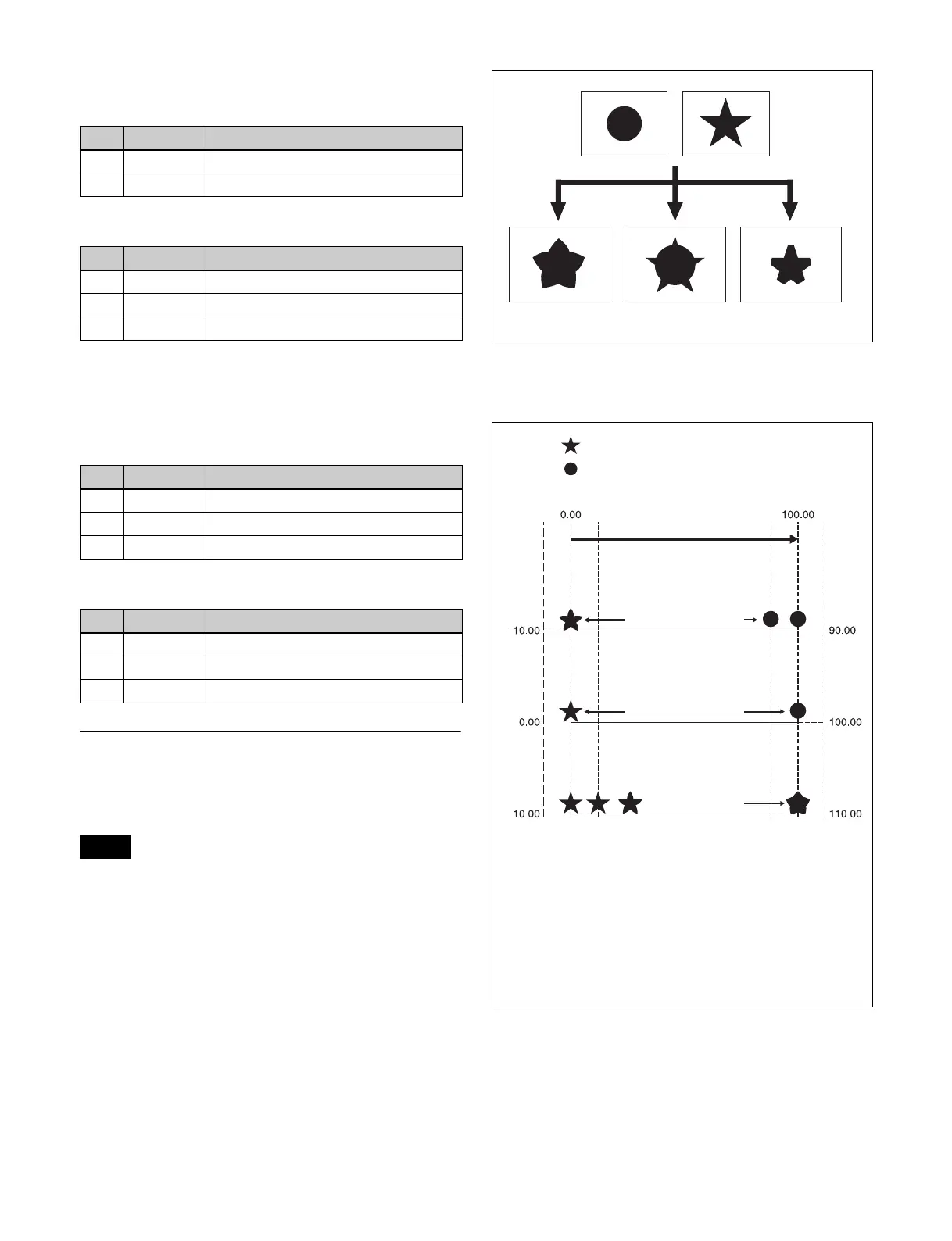142
When a mosaic wipe is selected (pattern numbers
200 to 203, 206 to 213, 224 to 247, 250 to 257, 260
to 269)
When a karaoke wipe is selected (pattern
numbers 220 to 223)
a) At –100.00 tiles appear from the top edge (or left edge) of the screen; at
+100.00 tiles appear from the bottom edge (or right edge) of the screen.
b) At –100.00 tiles in all rows appear simultaneously; at +100.00 tiles appear
in the next row after the tiles in the previous row are completely displayed.
When a random wipe is selected (pattern number
273)
When a diamond dust wipe is selected (pattern
number 274)
Pattern Mix
You can create a new pattern by combining two selected
patterns (main and sub).
It is not possible to execute a pattern mix in an independent
key transition.
Types of pattern mix
The following four types of pattern mix can be selected.
Mix: The effect of the sub pattern is applied to the main
pattern, modifying the outline or nature of the main
pattern.
Positive NAM (+Nam): Creates a pattern with an outline
comprising the sub pattern superimposed on the main
pattern.
Negative NAM (−Nam): Creates a pattern with an outline
of the overlapping portion of the main pattern and the
sub pattern.
Morphing: As the transition progresses, the pattern
changes. It morphs from the main pattern, through a
mix combination, to the sub pattern.
• Parameter settings
Start: Point in the transition at which the main pattern is
at 100%
End: Point in the transition at which the sub pattern is at
100%
No. Parameter Adjustment
1 H Tile No Number of tiles horizontally
2 V Tile No Number of tiles vertically
No. Parameter Adjustment
1 Start Position of start tile
a)
2 Row No Number of rows of tiles
3 Phase Delay for next row
b)
No. Parameter Adjustment
1H Size Tile width
2V Size Tile height
3 Volatility Rate of tile generation
No. Parameter Adjustment
1 H Size Particle width
2 V Size Particle height
3 Flash Rate Rate of generation of particles
Note
Mix
Positive NAM
Negative NAM
Main pattern at 100%
Sub pattern at 100%
Transition
(0.00 to 100.00)
Start value
End value
1
3
5
2
4
6
1 Start of main pattern and sub pattern mix
2 Mix ends during transition, and sub pattern becomes 100%
3 Transition starts with main pattern at 100%
4 Ends with sub pattern at 100%
5 Mix begins during transition
6 Transition ends with main and sub patterns still in mix
combination
